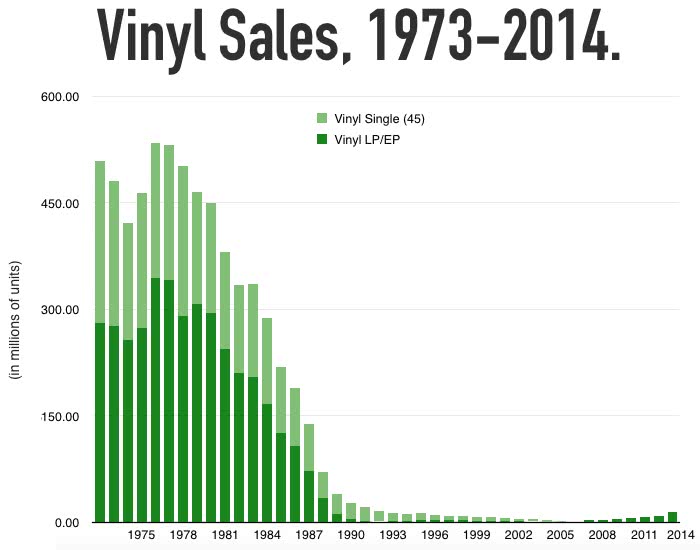The fact that there’s a serious revival happening in the vinyl market is undeniable. Yes, we can argue about how vinyl sales still account for a relatively minuscule percentage of the greater music market and will likely remain a niche, but the fact that people are buying more vinyl than they have in over a decade is irrefutable.
As Tone Deaf previously reported, annual sales of vinyl records in the UK surpassed one million for the first time in almost two decades last year, with artists like Jack White finding new and innovative ways to make the format appealing to a younger generation of music listeners, though the annual Record Store Day did most of the heavy lifting in that regard.
[include_post id=”429917″]
We’re buying so much vinyl that there’s even a chance that it could kill the industry. According to a recent report by the Wall Street Journal, the resurgence of vinyl has left the 15-or-so pressing plants still operating in the US struggling to keep up with demand, pushing ageing machinery to its limit as raw vinyl material becomes all the more scarce.
But what does the much publicised “vinyl revival” actually look like when we crunch the numbers? The graph below, which comes courtesy of the Recording Industry Association of America, sheds some light on the matter. As you can see, while there’s certainly been a recent spike in vinyl sales, the numbers are dwarfed by mid-’70s and even ’80s sales.

Source: Recording Industry Association of America (RIAA). All figures in millions, and US-based.




































